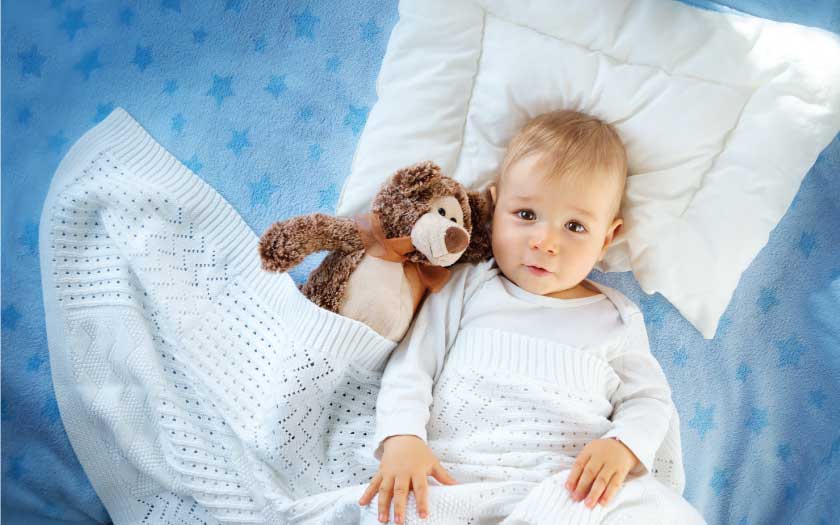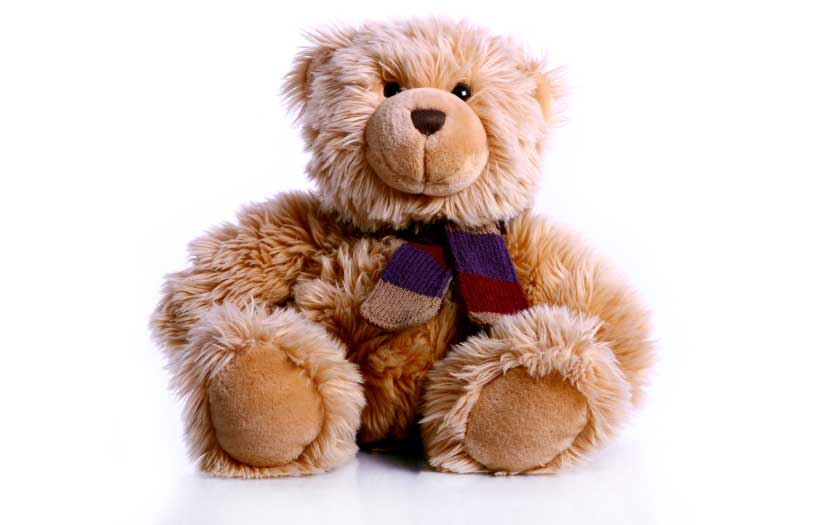Who can resist a soft toy? Sewn from a textile such as cotton cloth, velvet, towelling or terrycloth, soft toys are stuffed with soft material such as soft synthetic fiber batting; cotton; straw or wood wool to give them that soft, cuddly feel. Read on to get just a bit more acquainted with these ageless toys and for tips on safety measures and how to care for them.
Stuffed toys are made in many different forms and while most resemble loveable, cuddly animals, some are made to resemble legendary creatures and cartoon characters. They come in all sizes too, from tiny enough to fit in the palm of your hand to as tall as an adult! While soft toys have been popularly used as comfort objects for babies and children, they have evolved since into decorations, gifts for special occasions, and even as collectors’ items.
Soft toys and your little one
Most of us probably have fond memories of a favorite soft toy or two we cherished when we were young and there’s hardly a little child that does not appreciate a cuddly soft toy even during these times of modern toys and digital apps.
No matter how the world changes around us, it’s hard not to think of soft toys as great playthings for small children, as they can stretch their imaginations with little risk of hurting themselves. Things may be a tad different now, though, as soft toys to have evolved with the times and some of these toys have become more detailed, carry more intricate features, and are embellished with all sorts of buttons, studs, beads, and what-nots. Not surprisingly, there are also stringent warnings that apply to soft toys these days. There’s more awareness of safety and suitability, so when you’re looking for that perfect soft toy, there are a few essential things to look out for.
When choosing soft toys for babies and toddlers, ones made from cloth are always safer compared to wool, fake fur, or hair. Babies and toddlers generally enjoy biting and sucking on toys, which makes fur, hair, and wool a choking hazard. For the same reason, avoid soft toys with stick-on or sewed-on features which may easily be pried or bitten off and end up in little mouths.
Tips on choosing soft toys
- Ensure there are no small parts that can come off easily when bitten, gnawed, or chewed on for these may get trapped in a child’s throat or windpipe.
- Don’t take it for granted that a soft toy is made with filling that is always safe for children. Always check that the toy’s filling is free of objects that may be harmful to a child before purchasing one. To be sure, hold the toy and feel it for any sharp objects.
- Ensure that the material used for the soft toy will not tear apart at the seams, thus allowing the filling to escape. They should be securely sewn, especially if synthetic material like nylon thread has been used to sew the toy together.
- Watch out for any long and loose pieces of thread on a stuffed toy that may not only pose a choking hazard but may cause strangulation too.
Conduct regular checks on soft toys
Check toys regularly to make sure any accessories or small parts remain securely attached so that children are safe from choking hazards. If seams split, re-sew them straight away or else, dispose of the toy. When it comes to soft toys, remember that torn ones are dangerous as children could swallow and choke on the contents.
Caring for soft toys
Like anything else that belongs to children, soft toys do get dirty but there’s no need to keep tossing them through the washing machine after every spillage or smudge, for they can be kept clean without the use of detergents.
You can dust and clean a soft toy, even machine washable ones, by holding some mesh cover over the soft toy and vacuuming it on low power to get rid of mites, dust, and anything else. This should help keep the toy fairly clean until it’s time for a real wash.
Alternatively, you can try the following DIY dry cleaning method in eight easy steps:
You will need:
- Plastic garbage bag
- Soft-bristle brush
- Baking soda
- A vacuum cleaner with a hose
- Pour about 1/2 cup of baking soda into an appropriate size plastic garbage bag. If you are cleaning an oversized soft toy, add a full cup or more of baking soda to ensure adequate coverage.
- Place the toy into the plastic bag, letting it rest at the bottom. Squeeze excess air out of the bag, but leave just enough room so that the toy can freely move around and tumble when you shake the bag.
- Twist and tie the top of the plastic bag or use a twist-tie to close off the bag.
- Next, shake and tumble the bag, gently, using an up-and-down, and circular left-to-right motions, for a couple of minutes.
- Keep the stuffed toy inside the enclosed bag for 15 more minutes. The baking soda will work to deodorize the toy and also will bind and liberate dirt and grime from the fabric.
- Open the bag and shake excess baking soda off from the toy. Discard the bag at once in the trash.
- Remove residue of dry cleaning, which includes dirt and grime by using a vacuum cleaner, and/or a soft-bristled brush to brush away caked-on baking soda, residue, and dirt.
- Let the soft toy air out for at least an hour before letting your little one play with it.
Featured image source: Fotolia



